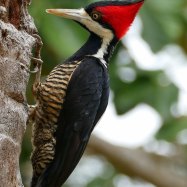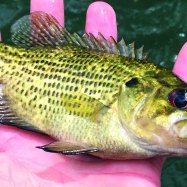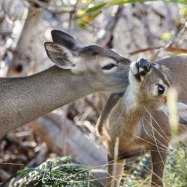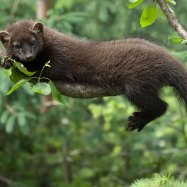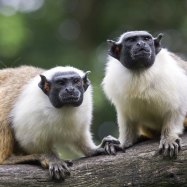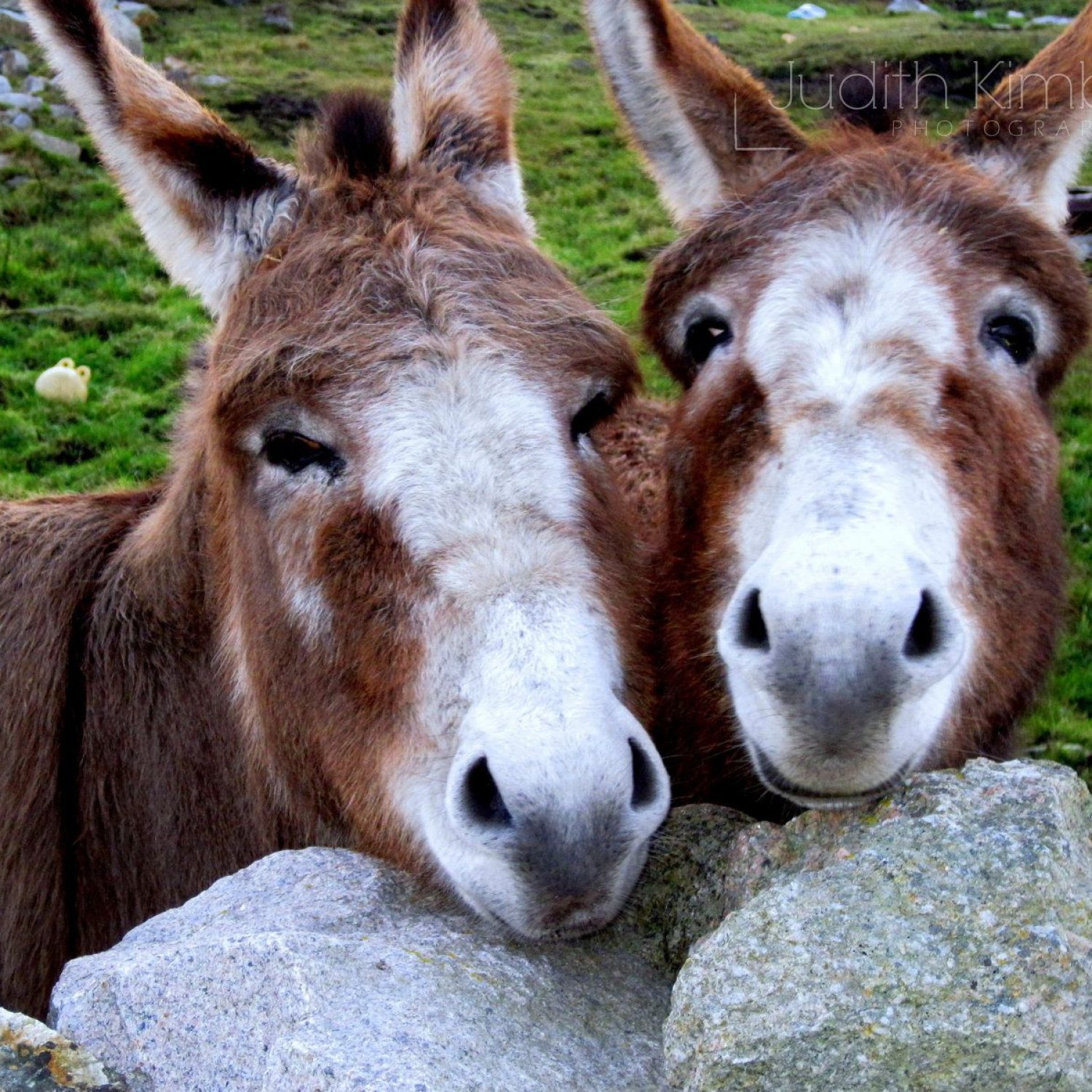
Donkey
1.2 - 1.4 meters (4 - 4.6 feet)
Donkeys are well-known as hard-working and reliable animals, with a compact body shape that makes them perfect for carrying loads. They can grow up to 1.4 meters in length and are commonly found in many countries as working animals. Donkeys belong to the Equidae family and are highly domesticated, making them a beloved part of many cultures. These sturdy creatures are not only great for labor, but also make wonderful companions.
Animal Details Summary:
Common Name: Donkey
Kingdom: Animalia
Habitat: Grasslands, deserts, and semi-arid areas
Meet the Humble Donkey: A Resilient and Hardworking Animal
Amidst the exotic and majestic animals that roam the earth, there is one that often goes unnoticed but plays a crucial role in human society. The donkey, scientifically known as Equus africanus asinus, may not be as alluring or eye-catching as its relatives, the horse and zebra, but it holds a special place in history and a vital role in many cultures.Donkeys have a long history of co-existing with humans, with evidence of domestication dating back thousands of years. These resilient and hardworking creatures have been used for a variety of tasks, from transportation and agriculture to carrying heavy loads and even companionship Donkey. Despite their significant contributions to human society, donkeys are often overshadowed by their more glamorous counterparts. It's time to shed some light on this humble and often underestimated animal.
The Basics: What is a Donkey?
The donkey, also known as Equus asinus, is a domesticated mammal belonging to the Equidae family. They are closely related to horses and zebras and share many similar characteristics. They have a stocky and sturdy body, standing at an average height of 1.2 - 1.4 meters (4 - 4.6 feet) and weighing between 160 - 480 kilograms (350 - 1050 pounds). Donkeys come in varying coat colors, ranging from gray, brown, black, and white, making them easily distinguishable from one another Decorator Crab.Around the World: Where Do Donkeys Live?
While donkeys are believed to have originated from Africa, they have spread worldwide and can be found in many countries. They are commonly domesticated in regions with arid climates, such as grasslands, deserts, and semi-arid areas. Donkeys have also adapted well to different environments, making them a versatile working animal.The Donkey's Role in History and Human Society
Donkeys have been domesticated for thousands of years and have played a significant role in human history. In ancient Egypt, they were revered as a symbol of strength and were often depicted in hieroglyphs as a symbol of royalty and divinity. They were also essential in the construction of the Great Pyramids, carrying heavy blocks of stone and other materials.In many cultures, donkeys have been used as a means of transportation. They are sure-footed animals, making them ideal for navigating through challenging terrain. They were commonly used as pack animals, carrying goods and supplies for trade and transportation. Donkeys have also been used for agricultural purposes, such as plowing fields and carrying heavy farm equipment.
Moreover, donkeys have been a reliable source of companionship for humans. They are known for their gentle and calm demeanour, making them ideal therapy animals for individuals with disabilities or mental health conditions. In some cultures, donkeys are even considered sacred animals, with festivals and celebrations held in their honor.
The Donkey's Diet
Donkeys are herbivorous animals, meaning they primarily eat plants and vegetation. In their natural habitat, they graze on a variety of plants, including grass, shrubs, and leaves. As domesticated animals, they are also fed hay, grains, and other forms of roughage to maintain a balanced diet.The Donkey's Relationship with Humans
One of the main reasons for the widespread domestication of donkeys is their strong and trusting relationship with humans. Donkeys are highly intelligent animals and can form close bonds with their owners. They are also known for their unwavering loyalty and their ability to remember faces, making them reliable working animals.Donkeys are often used as guard animals, protecting livestock from predators such as coyotes and wolves. Their loud braying and territorial nature serve as a warning to potential threats, making them valuable assets for farmers and ranchers.
The Importance of Donkeys in Modern Society
In today's modern society, donkeys continue to play a crucial role in many industries. In developing countries, they are still used for transportation and agriculture, providing an essential source of income for many families. In urban areas, donkeys are also used as therapy animals, providing comfort and support to individuals in need.Donkeys also hold promise in the field of medicine. Their tough hooves and strong bones have been studied for their regenerative properties and may hold the key to healing and repairing human bones and tissue in the future.
Threats to the Donkey Population
Despite their resilience and adaptability, donkeys face several threats that endanger their population. One of the main threats is overworking and mistreatment by owners, as they are often used beyond their physical capabilities. Donkeys are also susceptible to diseases and parasites, which can be fatal if left untreated.Additionally, the rise of modern technology and transportation has decreased the demand for donkeys, leading to a decline in their population. This decrease is also attributed to poaching and illegal trade for their skin, which is used for traditional medicine and as a fashion statement.
The Future of Donkeys
Fortunately, various organizations and conservation efforts are being made to protect and preserve the donkey population. In some countries, laws have been put in place to ensure the responsible ownership and treatment of donkeys. In other regions, sanctuaries have been established to provide a safe haven for abused or neglected donkeys.Moreover, donkeys are gaining recognition for their contributions to human society, leading to a renewed interest and appreciation for these hardworking animals. Their gentle nature and loyal companionship have also earned them a special place in the hearts of many individuals, leading to an increase in adoption and fostering programs.
The Donkey's Resiliency and Enduring Spirit
In conclusion, donkeys may not hold the same prestige as other animals, but their enduring spirit and hardworking nature make them a vital part of human society. From their historic contributions to their current roles in various industries, donkeys have proven to be resilient creatures, adapting to different environments and serving as a symbol of strength and determination.It's time to give credit where credit is due and acknowledge the humble donkey as the unsung hero of the animal kingdom. Their presence may often go unnoticed, but their impact and unwavering loyalty will continue to play a crucial role in our world for years to come.

Donkey
Animal Details Donkey - Scientific Name: Equus africanus asinus
- Category: Animals D
- Scientific Name: Equus africanus asinus
- Common Name: Donkey
- Kingdom: Animalia
- Phylum: Chordata
- Class: Mammalia
- Order: Perissodactyla
- Family: Equidae
- Habitat: Grasslands, deserts, and semi-arid areas
- Feeding Method: Herbivorous
- Geographical Distribution: Worldwide
- Country of Origin: Unknown (domesticated thousands of years ago)
- Location: Domesticated in many countries as a working animal
- Animal Coloration: Variable coat colors including gray, brown, black, and white
- Body Shape: Stocky and sturdy
- Length: 1.2 - 1.4 meters (4 - 4.6 feet)

Donkey
- Adult Size: About 0.9 - 1.6 meters (3 - 5.2 feet) at the shoulder
- Average Lifespan: 25 - 30 years
- Reproduction: Sexual
- Reproductive Behavior: Polygynous (males mate with multiple females)
- Sound or Call: Braying
- Migration Pattern: Non-migratory
- Social Groups: Can be solitary or live in small groups
- Behavior: Gentle, hardworking, and intelligent
- Threats: Habitat loss, disease, and predation
- Conservation Status: Domesticated (not of conservation concern)
- Impact on Ecosystem: Donkeys can have positive impacts on ecosystems by grazing and controlling vegetation growth
- Human Use: Domesticated for agricultural work, transportation, and as companion animals
- Distinctive Features: Long ears and a short, upright mane
- Interesting Facts: 1. Donkeys are highly adapted to arid environments and have a reputation for being stubborn. 2. They have a keen sense of self-preservation and are known for being sure-footed on rugged terrains. 3. The ancestor of the domestic donkey is the African wild ass. 4. Donkeys have been used by humans for thousands of years and have played a vital role in agriculture and transportation. 5. They are known for their braying sound, which is distinct and easily recognizable.
- Predator: Predators such as lions, wolves, and large carnivores
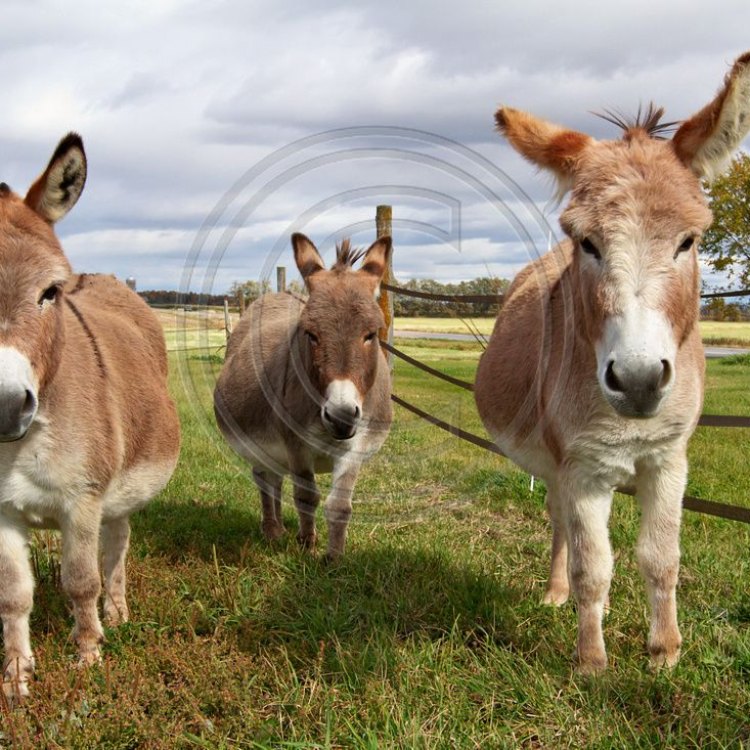
Equus africanus asinus
The Remarkable Donkey: A Gentle, Hardworking, and Highly Adapted Animal
When you think of domesticated animals, cats, dogs, and horses may come to mind. But one animal that often gets overlooked is the donkey. They may not be as flashy or popular as their equine counterparts, but donkeys have unique qualities that make them stand out. From their physical characteristics to their behavior and role in ecosystems, donkeys are truly remarkable creatures PeaceOfAnimals.Com.Donkeys, also known as ass or burros, are members of the Equidae family, which includes horses, zebras, and mules. While donkeys may resemble horses, they have distinct features such as long ears and a short, upright mane. They also vary in size, with adult donkeys ranging from 0.9 to 1.6 meters (3 to 5.2 feet) at the shoulder, and can weigh up to 450 kilograms (990 pounds).
These herbivorous animals have a lifespan of 25 to 30 years, making them long-lived compared to other domesticated animals. Their unique reproduction behavior is also worth noting, as they are sexual and practice polygyny, where males mate with multiple females. This reproductive behavior is beneficial to their species, as it ensures a higher mating success rate and broader genetic diversity Diplodocus.
One of the most distinct features of donkeys is their braying sound, which can be heard up to 3 kilometers away. Their call is quite unique, and it is often described as a loud, raspy, and harsh sound. Their braying may seem comical to humans, but it serves as a form of communication between individuals. It also helps them locate each other in open and noisy environments.
Donkeys are non-migratory animals, meaning they don't regularly move from one place to another. Instead, they are territorial creatures, making efforts to protect their space from intruders. However, donkeys can be solitary animals or live in small groups of up to ten individuals. Their social structure is not as complex as other herd animals, but they do form meaningful bonds with each other, particularly with their offspring.
Among their unique behaviors, donkeys are well-known for being gentle, hardworking, and intelligent animals. They are highly adaptable to various environments and have a reputation for being sure-footed on rough terrains. This adaptability is due to their ancestors' evolutionary history, as donkeys are believed to have originated from the African wild ass.
Domestication of donkeys has been documented as early as 4000 BC, and they have been an essential part of human civilization ever since. These animals have played a vital role in agriculture and transportation, helping humans plow fields and carry goods. They are also used as companion animals, thanks to their gentle and easy-going nature.
Their ability to thrive in arid environments also makes them valuable to humans. Donkeys are well adapted to dry and hot climates, and they can go for extended periods without water. They are often used as pack animals in desert regions, carrying goods and supplies through rugged terrain. Their endurance and hardiness make them ideal for such tasks.
In recent years, donkeys have been facing various threats in their natural habitats, mainly due to human activities. Habitat loss and degradation are major factors that impact donkey populations. As more land is converted for agriculture and urbanization, their natural habitats disappear, leaving them with limited space to roam and find resources.
Donkeys are also susceptible to diseases, which can decimate their numbers. African horse sickness, a viral disease transmitted by insects, is a significant concern for donkeys. They are also at risk of being hunted by predators such as lions, wolves, and other large carnivores, which can significantly impact their populations in the wild.
However, not all human-donkey interactions have negative effects. In fact, donkeys can have positive impacts on ecosystems. As herbivores, they play a critical role in controlling vegetation growth and maintaining balance in ecosystems. Grazing by donkeys helps prevent overgrowth of plants and can support the growth of diverse plant species.
In addition to their ecological roles, donkeys also have a significant socio-cultural impact on humans. They are deeply embedded in many cultures, often representing symbols of hard work, perseverance, and humility. In some cultures, they are also seen as sacred animals and are used in religious ceremonies.
Unfortunately, the demand for donkeys for various purposes, such as meat and traditional medicine, has led to overexploitation in some countries. This has resulted in a decline in wild donkey populations and raised concerns about their conservation status. However, globally, donkeys are classified as domesticated animals, and their populations are stable.
While donkeys may not be considered at risk of extinction, it is crucial to protect their populations and their habitats to ensure their well-being. This includes implementing measures to prevent habitat loss and regulating their use for commercial purposes. Education and awareness about the importance of donkeys in ecosystems and their cultural significance can also aid in their conservation.
In conclusion, donkeys are truly remarkable animals with unique characteristics and behaviors. From being gentle and hardworking to highly adapted and intelligent, they have many qualities that make them stand out. Despite facing threats in the wild, donkeys continue to play important roles in ecosystems and contribute to human livelihoods. Let us appreciate and protect these incredible creatures for generations to come.
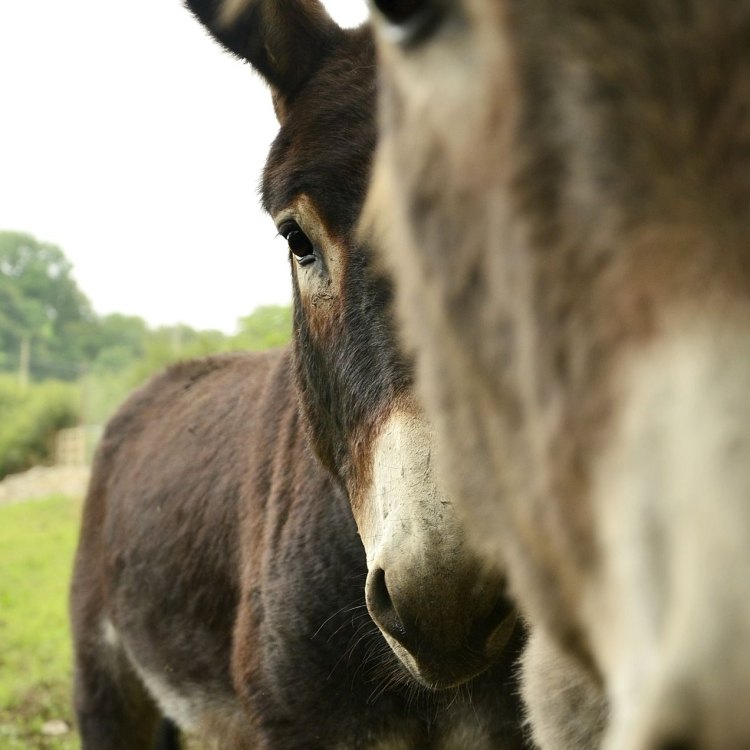
Meet the Humble Donkey: A Resilient and Hardworking Animal
Disclaimer: The content provided is for informational purposes only. We cannot guarantee the accuracy of the information on this page 100%. All information provided here may change without prior notice.


